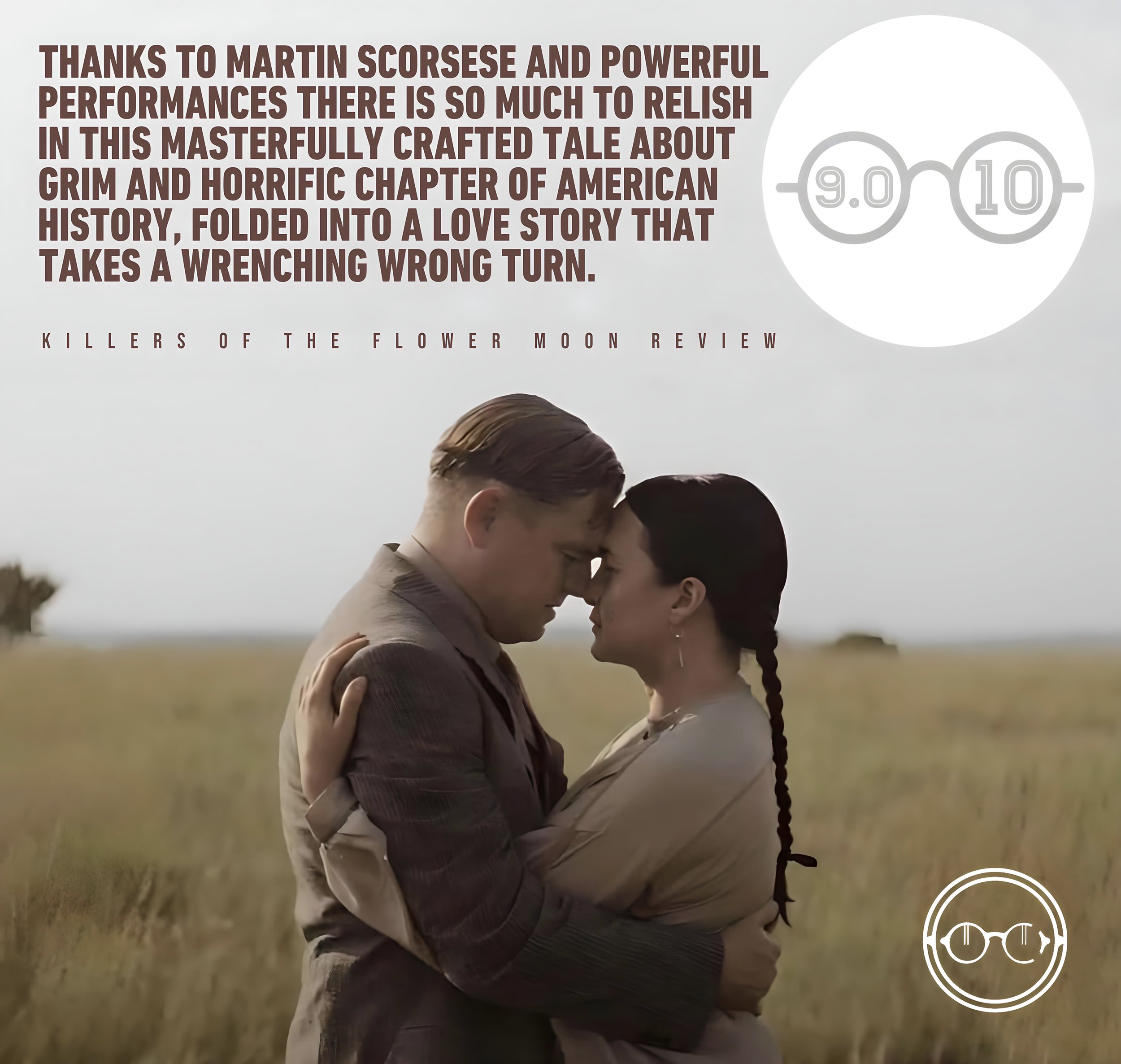Killers of the Flower Moon Review
With Martin Scorsese probably now thinking her waging a one-man battle to compensate for American cinema's capitulation to the forces of Marvel, Mattel, and franchise exploitation at times (this is a joke), it was about time for a new project from the director. Killers Of The Flower Moon is his latest three-hour-plus epic, and it's every bit as passionate, gorgeous, and horrific as the flicks that made him famous. But, in other ways, it's a continuation of Martin Scorsese's long research into the origins of American violence.
The backdrop this time is Osage County, a forgotten corner of Oklahoma where the discovery of oil in the early twentieth century made the Osage Native Americans the richest people on the planet per capita. This does not sit well with their white neighbors, who undertake a systematic campaign of genocide by subterfuge under the charismatic leadership of cattle owner William "King" Hale (a beautifully malevolent Robert De Niro, sporting diabolical driving goggles). Over many years, the Osage have been found shot, poisoned, or blown up one by one, with local investigators often baffled.
One of Hale's lengthier games is strategic marriage, so he enlists his nephew, foolish doughboy Ernest (Leonardo DiCaprio), who has recently returned from the war, to seduce and marry Mollie Kyle (Lily Gladstone), heiress to a substantial portion of the Osage fortune. Ernest is enthusiastic about the mission, even falling in love with Mollie, but this doesn't stop him from supporting his uncle in the murder of her closest family.
The film is based on David Grann's magisterial 2017 history, but with one major variation. Whereas Grann concentrated on the role of the newly created FBI and Texan ranger Tom White in bringing Hale to justice, Scorsese and DiCaprio decided they didn't want to make another white savior story; instead, they wanted to get to the heart of the story. As a result, their attention is drawn to Ernest, who is divided between the woman he loves and the demonic uncle he fears.
You could argue that this isn't a significant improvement. The Osage are portrayed as a quiet people who despise the white people's constant "blackbird chatter," and Gladstone (perhaps best known for her performances in Kelly Reichardt's Certain Women) plays Mollie with a sly, subtle humor that gradually curdles into implacable hatred. However, she is a quiet sufferer for lengthy sections of the film, as the film concentrates on Ernest's maddening moral cowardice. Among his many achievements, screenwriter Eric Roth may be most known for his work on Forrest Gump - and DiCaprio's Ernest is similarly dim, scarcely a character who can bear the weight of the narrative.
There’s a vast cast. Readers will be tickled to see Jason Isbell, Sturgill Simpson and Jack White among the minor players, but the Native American characters are largely corpses, meeting their ends in increasingly gruesome ways.
With spiritual respect for the Osage rites, the film is beautifully realized and sometimes astonishingly innovative. However, the inability to create a voice for the Osage feels like a huge squandered opportunity. Nonetheless, there is much to like in this rich, fascinating, horrific yet humane film. Martin Scorsese is still at the top of his game at the age of 80, along with his usual crew of DiCaprio and De Niro.




